
By Siobhan Kent
Who doesn’t love a good metcon – the adrenaline, fun, challenges and pain. Not to mention the camaraderie that’s built when you’re all lying on the floor panting and sweating following a good WOD. Metcons are what the sport of Crossfit is all about, and we crossfitters are addicted to them.
However, if I’ve been told one thing more than anything else since I started, it’s been ‘get strong and don’t over-metcon’. Because of this theory, there came a time when I was doing just two metcons per week – and, given I’d fast become a metcon addict, this freaked me out!
Suffering from withdrawal, I rebelled – why not throw in a sneaky extra metcon per week to satisfy my addiction?! Then my strength gains stopped dead. So, I thought maybe there was some wisdom in the theory, and decided to investigate.
Each year the workouts at Crossfit competitions like the Games and Regionals are getting heavier. The sport is evolving so, if you want to be competitive, you have to be strong. However, strength gains are hard to come by, and it’s a slow process.
Adam Pirri from Crossfit Active in Sydney has been in the game four years, opening the box with his partners Chad McKay (2012 Australian Regionals winner), Luke Starr, Ben Perrin and Patrick Fitzsimons two and half years ago. He says there is no substitute for strength.
“No matter how good your technique is, if you’re not strong enough you won’t be able to lift it. Strength is everything – you need to have a good base level of raw strength, but also be able to apply that raw strength into the functional movements of Crossfit,” Pirri said.
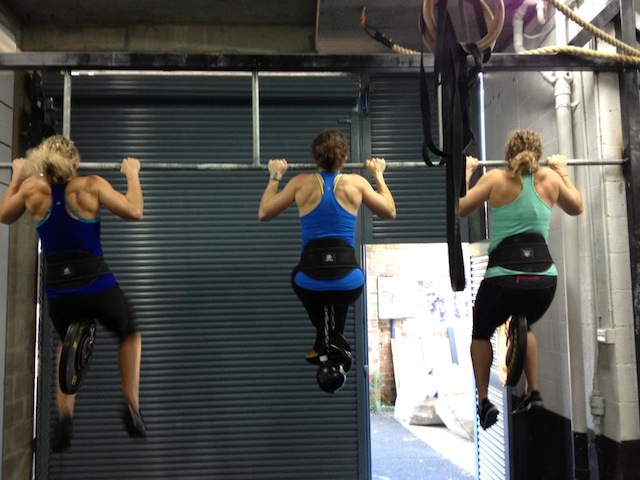
From left to right: Brooke Surtees, Stacey Harris, Claire Champine
“The nature of the sport has definitely changed. Look at the RXD weights in competition workouts these days compared to four years ago. As always, there is still a massive endurance part to the workouts, but more emphasis is put on heavier movements as Crossfit tries to become more spectator friendly.”
Adam Manikis, Crossfit Level 1 coach and 2011 Australian Regionals competitor, says crossfitters used to be endurance athletes, but these days they’re power athletes.
“If you look at the body shapes of the 2008 and 2009 Crossfit Games competitors, you’ll see huge differences to those on display this year. In 2012, there were more muscles compared with the leaner, lighter competitors from years gone by,” he said.
Too much circuit training in the form of metcons decreases testosterone, which is required in order to develop strength.
“Longer aerobic-based metcons decrease the production of hormones that are vital for strength gains, fatigue the body (and the mind!) and are hard to recover from. Fatigue will certainly not lead to any strength gains – it’s hard to gain strength as it is, let alone when you aren’t recovered,” he said.
Manikis says that the goal is to build strength for multiple reps. “You will hardly ever see a 1 rep max in a WOD. We need to move heavy weight fast,” he said.
So how much strength work is needed and will too many metcons hinder this? The body can’t do everything at once.
“You can’t recover from a metcon and build strength at the same time. Your body has to recover and adapt, otherwise you won’t make gains. If you’re smart about your training, in the off-season you focus more on strength and in-season include more metcons,” Manikis said.
Pirri believes the metcon is important all year around.
“It’s what our sport is built upon. Never stray to far from the roots of it,” he said.
“At different times of the year there should be more emphasis on metcon and less on strength and vice versa. But I don’t agree to get good at Crossfit you should stop the metcon and focus solely on strength. You need to keep building that metcon base as it is integral to the sport.”
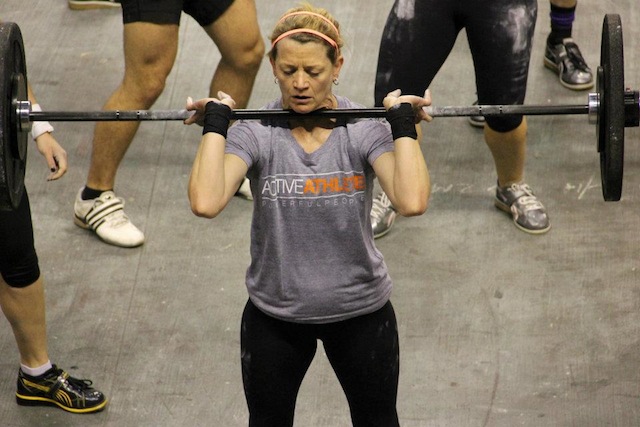
Lynne Knapman (3x world games masters competitor, each year top 10 placing)
Acknowledging that strength progress is hindered with too many metcons, he says that with careful programming the athlete can get the most out of both the metcon and strength work.
“I once believed it was a waste of time trying to build strength and metcon at the same time, but I’ve now come full circle and believe it’s a great idea. With careful, well thought-out programming, an athlete can get the most out of both facets of Crossfit,” Pirri said.
“However, it’s important to understand that at certain times of a cycle a metcon should not be attacked with 100% intensity, and used as skill work instead.”
Both trainers say that weekly training schedules for those trying to get competitive in the sport would vary depending on the individual and their weaknesses. When programming, it’s important to establish your unique goals, what’s important to you and what you’re willing to give up to get there.
Pirri says that, generally, training five days a week (three on, one off, two on, one off) is advisable, including shorter metcons four to five times per week.
“Each session should include a strength segment, with more emphasis on this. I would program the athlete a squat, press and some sort of pull cycle, which would last 12 weeks, and they’d completed it three times per week. After the strength part of the program, they would complete a short metcon,” he said.
“The other two sessions per week during that period they would work on their strength by gaining proficiency at the O-lifts – doing 20-30 moderate to heavy snatches and clean and jerks on a four week linear progression. On one of these days, the metcon should be something where they are gaining strength through the gymnastic movements.”
Manikis says Crossfit is not about your 1 rep max and you shouldn’t be scared to incorporate non-crossfit training to work on your weaknesses
“Train smart. For example, if you are weak in your triceps, don’t be scared to put some heavy tricep extensions into your training schedule,” he said.
“You’re only strong as your weakest link, and we have to be all-rounders – and stronger than we were.”
This issue has been covered extensively online, with one Crossfit Journal article suggesting the ‘Crossfit Strength Bias method’ http://journal.crossfit.com/2009/02/crossfit-strength-bias.tpl. Influenced by Coach Glassman, authors Jeff Martin and Darrell White proposed a method to increase specific strength without sacrificing overall CrossFit fitness.
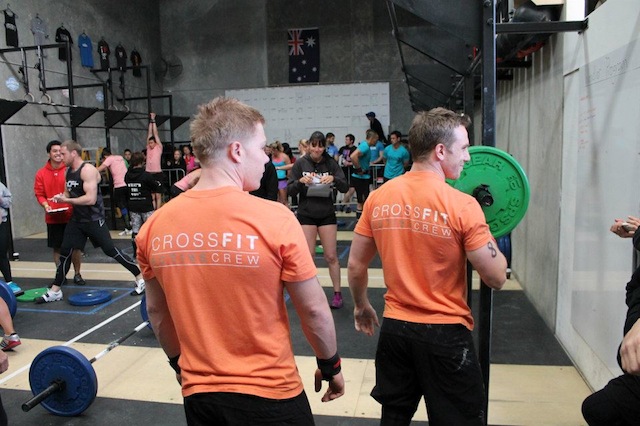
Deian Cousin (L) Luke Star (R)
Another article ‘Beware the lure of the Sexy Metcon,’ http://whole9life.com/2009/12/beware-the-lure-of-the-sexy-met-con says that ‘longer length met-cons (even those that go “heavy” for time) will not make you as strong as you could be. Sure, your cardio will improve, and you’ll most likely see some strength gains, but nowhere near the gains you’d see picking up heavy stuff with a tried-and-true 5×5, 3×5 and 3×3 protocol.’
They add that ‘metcons work primarily one metabolic pathway, with a very limited range of strength and power. But the biggest danger by far is this – these Sexy Met-Cons can quickly take a dive into “overkill” territory, where your training starts to hurt more than it helps.’
Indeed, any dedicated crossfitter will know that a heavy weekly schedule of strength and metcon work leads to continual soreness and stiff muscles. What gets us through is mobility, as painful as it is, so where does that fit in to the strength vs metcon debate?
“Many people fail to realise the importance of mobility. As important as strength is, it’s not the be all and end all. It’s nothing without mobility, because they go hand in hand,” Manikis said.
“For example, if you haven’t been doing any mobility and your hamstrings are short and tight, you’re going to execute a deadlift with a bad back position, over use your back and risk injury.”
So, it seems the theory I’ve been told ad nauseam comes from solid wisdom. But, it’s all about balance – you don’t have to sacrifice your beloved metcons, but if you want to gain strength and be competitive, plan accordingly.
In the ‘off season’, maybe cut a metcon or two and increase the time you spend under the bar lifting heavy, to gain muscle and strength. And by eating clean, training smart, recovering well and being consistent, you will improve your performance in Crossfit – which means the sky’s the limit!







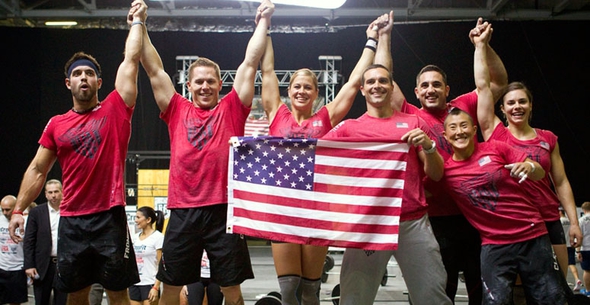

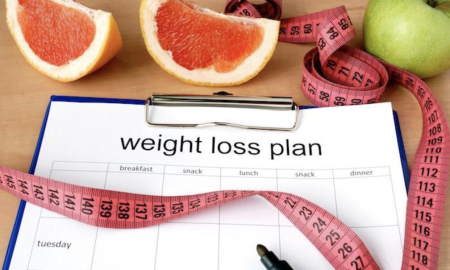








Follow Us